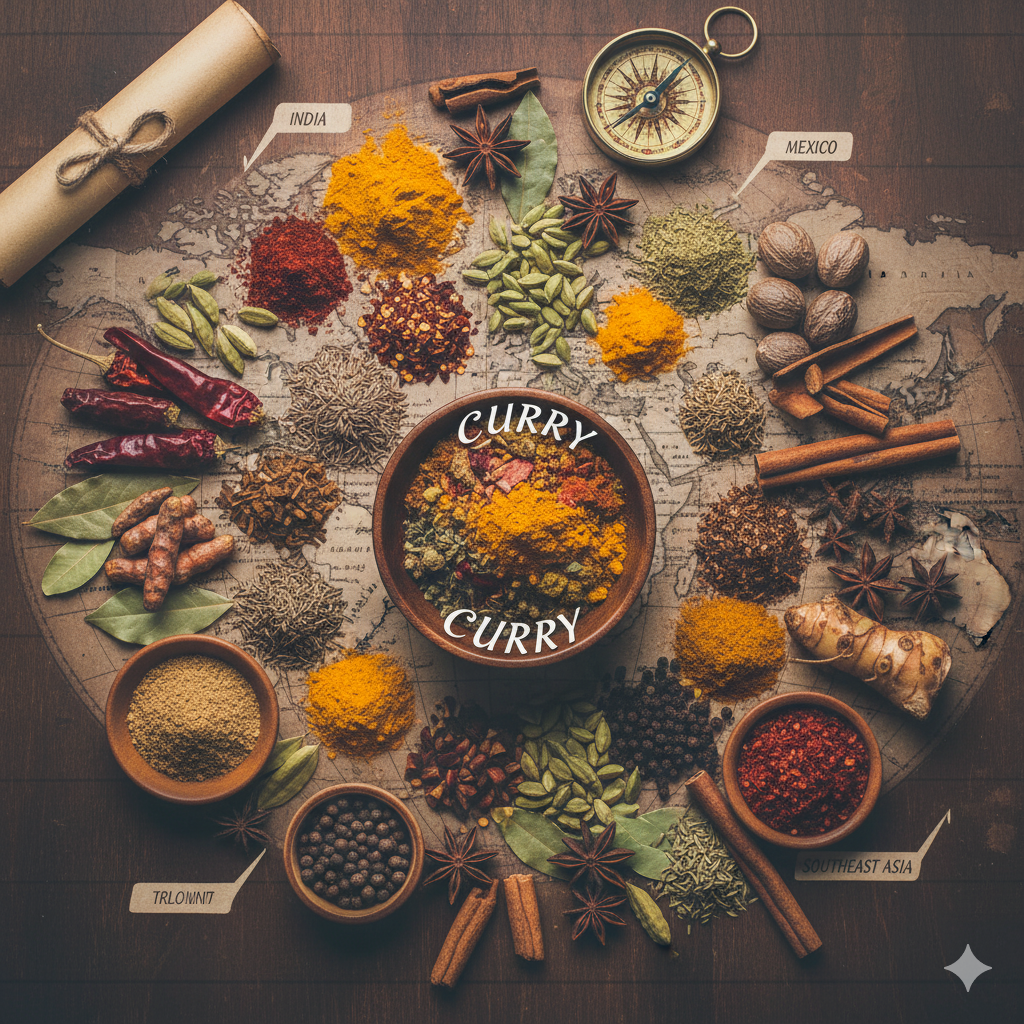
“Exploring the World Through Spices: How Flavor Defines Culture”
Have you ever tasted something and been instantaneously taken to a different place? Perhaps the strong, colorful kick of chili powder reminded you of a street food market on a busy city street, or perhaps the warm, aromatic taste of cinnamon and cardamom transported you back to a holiday celebration. That is how spices work their charm. They are the very essence of a culture’s cuisine, storytellers, and historians, and they are more than just seasonings we use in our food. Sometimes all it takes to fully comprehend a place is to taste its spices.
Spices are the kitchen vocabulary. For example, the phrase “curry” in India refers to a symphony of spices rather than a single spice; it is a mixture of turmeric, cumin, coriander, and chili, each of which has a special formula that has been passed down through the years. A tale of coziness and home is conveyed by the warmth of garam masala in a hearty stew. In Mexico, the earthy undertones of cumin and the smokey heat of chipotle peppers form the basis for the richness of flavor found in everything from a basic taco to a sophisticated mole sauce. These are not arbitrary decisions; rather, they are a clear representation of a people’s history, geography, and climate.
In addition to being delicious, spices have greatly influenced the way the world is now. The hunt for cloves, nutmeg, and black pepper sparked the era of travel, establishing trade networks that linked continents and permanently altered world economies. The high-stakes game of the spice trade resulted in explorations and discoveries that eventually influenced the current map. These ancient voyages have a direct impact on the flavors we enjoy today. The taste of nutmeg, which once fueled empires and spurred great adventures, is what you get when you add a pinch to your coffee.
History, however, is not the conclusion of the story. Spices are very personal as well. They are connected to customs and festivities. Many regions of the world associate winter festivities with the aroma of cloves and star anise boiling in mulled wine. The aromatic base of many Southeast Asian meals is made up of the fragrant herbs galangal, ginger, and lemongrass, which result in a flavor profile that is both calming and energizing. These preferences are frequently entwined with sentiments of happiness, tradition, and family.
So, give it some serious thought the next time you use a spice in your cooking. What was the source of it? In what way did you arrive at your kitchen? Which tales might it tell? You’re doing more than just giving your food more taste by focusing on these tiny but powerful nutrients. One tasty pinch at a time, you are immersing yourself in a worldwide fabric of history and culture.
